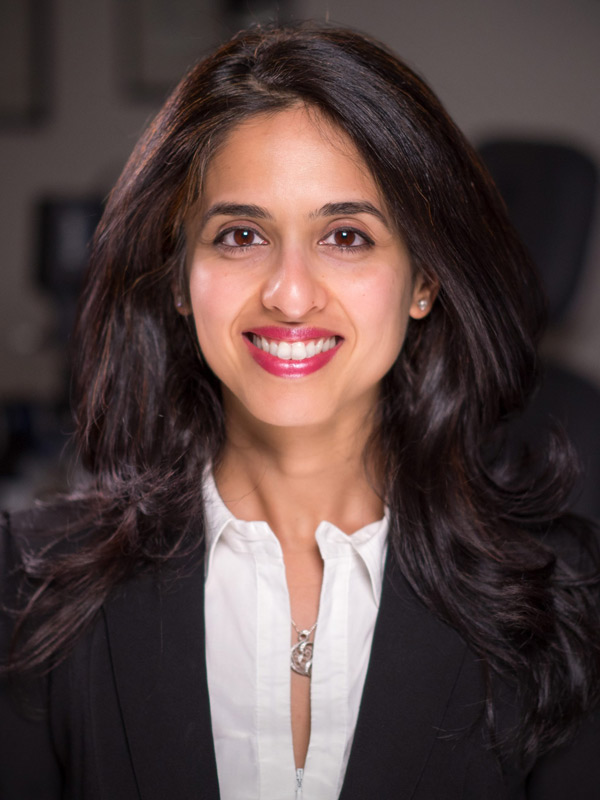
How Does LASIK Eye Surgery Work?
LASIK is a precise laser procedure that reshapes the cornea to improve how light focuses on the retina, helping to correct vision. Many people considering LASIK are curious about how the procedure works and what makes it so effective. If you’re wondering whether LASIK is an option for keratoconus, take a look at our article Laser eye surgery keratoconus for more details.
For now though, this article takes a closer look at the technology behind LASIK, the step-by-step process of the surgery, and how the eye heals afterwards. Whether you're exploring vision correction options or simply interested in the science behind LASIK, understanding how it works can provide valuable insight into this widely performed procedure. For readers considering LASIK surgery in Adelaide - contact us at IVISION LASER to arrange a consultation to discuss the suitability of this procedure for you.
Understanding LASIK and its purpose
How LASIK corrects refractive errors
LASIK (Laser-Assisted In Situ Keratomileusis) is a laser vision correction procedure designed to improve how light enters the eye. Refractive errors, such as nearsightedness (myopia), farsightedness (hyperopia), and astigmatism, occur when the shape of the eye prevents light from focusing properly on the retina.
LASIK works by reshaping the cornea, the clear front part of the eye, so that light can be directed more accurately onto the retina1 Alysa Hullett (2023) Eye Surgery for Nearsightedness: Know Your Options. healthline.com. https://www.healthline.com/health/eye-surgery-for-nearsightedness . LASIK has been shown to eliminate the need for glasses or contact lenses for most daily activities in 8 out of 10 candidates2Mayo Clinic (2024) LASIK eye surgery. Mayo Clinic. https://www.mayoclinic.org/tests-procedures/lasik-eye-surgery/about/pac-20384774 . However, the extent of correction and the suitability of LASIK depend on individual factors, which should be assessed by an eye care professional.
The role of the cornea in vision
The cornea plays a critical role in focusing light onto the retina at the back of the eye. In a healthy eye, light passes through the cornea and lens, bending (refracting) to create a sharp image. However, if the cornea is too curved, too flat, or irregular in shape, light does not focus correctly, leading to blurred vision.
By adjusting the shape of the cornea using a precise laser, LASIK helps light focus more effectively, improving visual clarity3 Mayo Clinic (2024) LASIK eye surgery. Mayo Clinic. https://www.mayoclinic.org/tests-procedures/lasik-eye-surgery/about/pac-20384774 . Before surgery, a thorough eye examination is conducted to measure various aspects of the eye, including corneal thickness, curvature, and refractive error4Moshirfar et al. (2023) Laser In Situ Keratomileusis (LASIK). StatPearls Publishing. https://www.ncbi.nlm.nih.gov/books/n/statpearls/article-35813/ . While LASIK has been effective for many people, results vary, and a thorough assessment is required to determine suitability.
The LASIK procedure – Step by step
Preparing for the procedure
Before LASIK begins, the eye is carefully prepared to ensure a safe and accurate procedure. Numbing eye drops are applied to minimise discomfort, and a specialised instrument is used to keep the eye open. The surgeon may also use a suction ring to stabilise the eye, helping to maintain precision during the procedure.
Advanced imaging technology is used to map the cornea, allowing the laser to make highly precise adjustments tailored to the patient’s vision needs5Moshirfar et al. (2023) Laser In Situ Keratomileusis (LASIK). StatPearls Publishing. https://www.ncbi.nlm.nih.gov/books/n/statpearls/article-35813/ . Patients remain awake throughout the procedure, with instructions to focus on a target light while the laser is in use.
Creating the corneal flap
LASIK involves creating a thin flap on the surface of the cornea, which allows for precise reshaping of the underlying tissue. This is typically done using a femtosecond laser, a highly advanced laser that emits ultra-fast pulses of light to separate the corneal layers with exceptional accuracy6 Sugar (2002) Ultrafast (femtosecond) laser refractive surgery. Current opinion in ophthalmology. https://pubmed.ncbi.nlm.nih.gov/12165709/ .
The femtosecond laser creates microscopic bubbles in the corneal tissue, forming a smooth and precise flap. This method allows for precise separation of tissue layers7 Kitzmann et al. (2007) Confocal microscopy of a femtosecond laser LASIK flap before separation. American journal of ophthalmology. https://pubmed.ncbi.nlm.nih.gov/17386281/ . Once the flap is created, it is gently lifted to expose the corneal tissue beneath, where the next stage of the procedure takes place.
Reshaping the cornea with a laser
Once the corneal flap is lifted, an excimer laser is used to reshape the cornea. The excimer laser is a highly controlled, cold laser that removes microscopic amounts of corneal tissue to adjust its shape8 Trokel et al. (1983) Excimer laser surgery of the cornea. American journal of ophthalmology. https://pubmed.ncbi.nlm.nih.gov/6660257/ .
This laser is guided by detailed measurements of the patient's eye, ensuring precise correction. By reshaping the cornea, the excimer laser allows light to focus more accurately on the retina, improving vision9 Abdelhalim et al. (2021) Nd:YAG fourth harmonic (266-nm) generation for corneal reshaping procedure: An ex-vivo experimental study. PloS one. https://pubmed.ncbi.nlm.nih.gov/34843558/ . The amount of tissue removed depends on the individual’s prescription and corneal characteristics.
The excimer laser operates in pulses, removing tissue in a highly controlled manner. The amount of reshaping depends on the patient’s refractive error—flattening the cornea for nearsightedness, steepening it for farsightedness, or smoothing irregularities for astigmatism. The laser treatment itself usually lasts only seconds per eye10Mayo Clinic (2024) LASIK eye surgery. Mayo Clinic. https://www.mayoclinic.org/tests-procedures/lasik-eye-surgery/about/pac-20384774 .
Repositioning the flap and completing the surgery
Once the cornea has been reshaped, the surgeon carefully repositions the corneal flap. This flap naturally adheres to the eye without the need for stitches, allowing for rapid healing. The eye’s natural healing process secures the flap in place over time.
The entire LASIK procedure is typically completed under 15 minutes for both eyes11 Reinstein et al. (2015) Standardization of laser in situ keratomileusis surgical technique evaluated by comparison of procedure time between 2 experienced surgeons. Journal of cataract and refractive surgery. https://pubmed.ncbi.nlm.nih.gov/26049833/ . After surgery, patients are advised to rest, avoid rubbing their eyes, and follow post-operative care instructions. Vision often improves within a few days, with further stabilisation occurring over the following 2 to 3 months12 Mayo Clinic (2024) LASIK eye surgery. Mayo Clinic. https://www.mayoclinic.org/tests-procedures/lasik-eye-surgery/about/pac-20384774 .
How the cornea heals after LASIK
The natural healing process of the corneal flap
In the first few hours after surgery, the corneal surface begins healing. Most patients will be able to see immediately after surgery, but not yet clearly13 Mayo Clinic (2024) LASIK eye surgery. Mayo Clinic. https://www.mayoclinic.org/tests-procedures/lasik-eye-surgery/about/pac-20384774 . During this stage, it is crucial to avoid rubbing or touching the eyes to prevent the flap from shifting.
Over the following days and weeks, the corneal tissue continues to stabilise. The epithelium—the outermost layer of the cornea—regenerates, further securing the flap.
Vision stabilisation and long-term effects
Although many patients notice clearer vision within 24 to 48 hours, full vision stabilisation can take several weeks to months14 Mayo Clinic (2024) LASIK eye surgery. Mayo Clinic. https://www.mayoclinic.org/tests-procedures/lasik-eye-surgery/about/pac-20384774 . Fluctuations in clarity are common during this period as the cornea adjusts to its new shape15 Mayo Clinic (2024) LASIK eye surgery. Mayo Clinic. https://www.mayoclinic.org/tests-procedures/lasik-eye-surgery/about/pac-20384774 .
For most patients, vision continues to refine over the next three to six months16 Mayo Clinic (2024) LASIK eye surgery. Mayo Clinic. https://www.mayoclinic.org/tests-procedures/lasik-eye-surgery/about/pac-20384774 , with minor changes occurring as the eye adapts. Long-term results vary depending on individual factors such as corneal thickness, prescription strength, and natural ageing processes.
Regular follow-up appointments allow the surgeon to monitor healing and ensure the cornea is stabilising as expected. In some cases, if minor refractive errors remain, an enhancement procedure may be considered once healing is complete.
Final thoughts on the LASIK process
For many individuals, LASIK offers a long-term solution to reduce dependence on glasses or contact lenses. The use of advanced laser technology allows for precise reshaping of the cornea, and, as demonstrated above, most patients experience clearer vision following the procedure. As with any medical treatment, outcomes can vary, and a comprehensive eye assessment is necessary to determine suitability.
For those in Adelaide interested in learning more about LASIK, IVISION LASER offers consultations to assess whether this procedure may be an option. A consultation with an eye specialist can provide personalised information based on individual vision needs and eye health.
Find out if you are suitable for vision correction
Not everyone is eligible for vision correction surgery.
Find out if you could benefit from this life changing surgery by taking the quick self-suitability quiz below:
Our most popular procedures

Hi, I’m Dr Aanchal Gupta, your laser and cataract surgeon in Adelaide
Over the past 10 years, I’ve had the joy of helping thousands of patients of all ages gain clear vision and freedom from glasses and contact lenses.
Laser eye surgery is a skill. Performing vision correction at a world-class standard hinges upon the expertise of your surgeon and their access to state-of-the-art tools.
I understand that getting eye surgery is a serious decision. Your eyes are unique and you should demand a custom solution tailored to your needs, lifestyle and goals. That’s why we offer a free appointment so we can meet and I can take the time to answer your questions and talk through any concerns you have.
I am passionate about helping patients transform their lives. I look forward to spending time with you at our gorgeous eye clinic in the heart of Adelaide to see whether you could gain exceptional vision without the need for glasses or contacts.
Dr Aanchal Gupta
MBBS, M.Med. (Ophth. Sci.), Grad. Dip. (Refract. Surg.), FRANZCO
Expert Laser Eye and Cataract Surgeon
